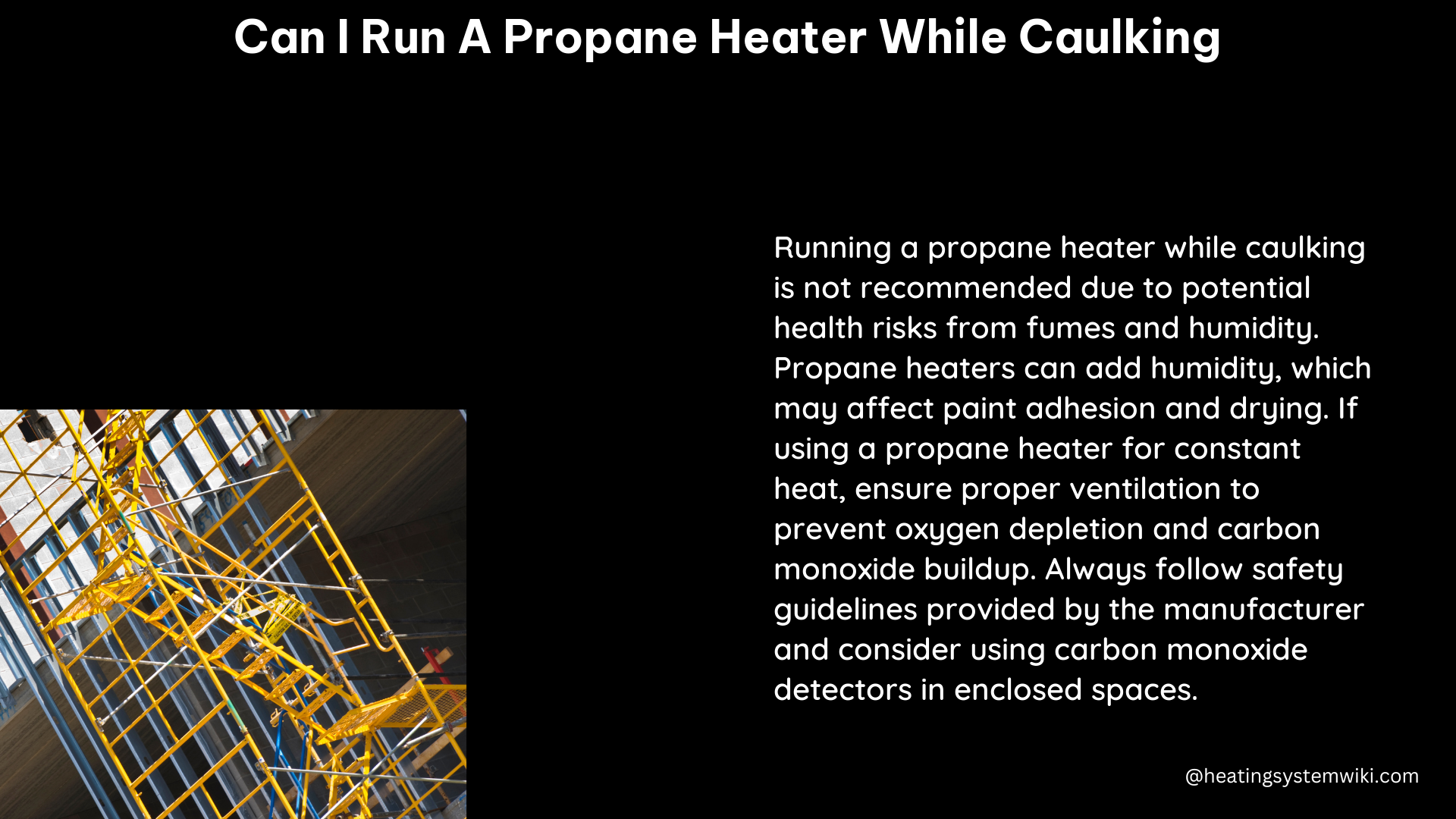Running a propane heater while caulking is not recommended due to safety concerns. Propane heaters produce carbon monoxide, a colorless, odorless gas that can be harmful or even fatal if inhaled in large quantities. When caulking, it’s essential to have proper ventilation to ensure the safety of the person doing the work and prevent any potential health hazards.
Propane Heater Installation Specifications
When it comes to installing a propane heater, there are several technical specifications to consider:
- Inlet Gas Pressure: The inlet gas pressure for a propane heater should be at least 11 inches of water column (wc).
- Service Lines: The service lines should be made of copper with flared fittings or pre-made rubber liquid propane lines suitable for liquid propane gas.
- Tank-to-Dwelling Distance: The distance between the propane tank and the dwelling should be at least 10 feet, and the connection should comply with local codes.
Connecting the Propane Heater

When connecting the propane heater, it’s crucial to use a compatible pipe thread sealant made especially for gases. Here are the key points to consider:
- Thread Tape: Thread tape for gas will usually be sold with an orange cap and orange-colored tape, and it’s double-layered for gas and oil applications.
- Leak Testing: Testing for leaks is essential and can be done by using a mixture of water and dish detergent to spray on all connections and joints. If bubbles form, it means there is a leak, and it should be repaired before turning on the gas.
Ensuring Proper Ventilation
When using a propane heater, it’s essential to ensure proper ventilation to prevent the accumulation of carbon monoxide. Here are some tips:
- Opening Windows and Doors: Opening a window and/or a door can help circulate more air and prevent the removal of vital oxygen from a space.
- Understanding Heater Operation: It’s important to know how the propane heater operates and to look for safety features such as overheating protection, a low oxygen sensor, and a high-temperature coated safety guard.
Utilizing a Carbon Monoxide Detector
Using a carbon monoxide detector is the ultimate safety tip when it comes to propane heaters. Here are the key points to consider:
- Alarm Functionality: The detector should emit a loud sound when it detects more carbon monoxide than is safely allowed.
- Battery Maintenance: The batteries should be changed twice a year, during the fall and spring time changes.
Additional Safety Considerations
While it may be tempting to use a propane heater while caulking to keep warm, it’s not recommended due to safety concerns. Here are some additional factors to consider:
- Proper Ventilation: Ensuring adequate ventilation is crucial to prevent the buildup of carbon monoxide, which can be harmful or even fatal if inhaled in large quantities.
- Heater Operation Knowledge: Understanding how the propane heater operates and its safety features is essential for safe use.
- Carbon Monoxide Detector: Using a reliable carbon monoxide detector can provide an early warning system and help protect against the dangers of this odorless, colorless gas.
In conclusion, while the convenience of a propane heater may be appealing during caulking projects, the safety risks outweigh the benefits. Prioritizing proper ventilation, understanding heater operation, and utilizing a carbon monoxide detector are essential steps to ensure a safe and successful caulking experience.
References:
– Installing a Propane Heater
– How to Use Propane Heaters Safely
– Using Propane Heaters
